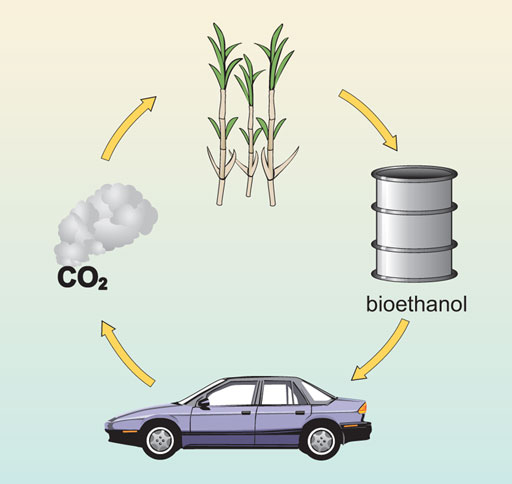1 What are biofuels?
The use of biological material (biomass) as a fuel or lighting material is not new; the earliest evidence for humans using wood for fires is at Gesher Benot Ya'aqov in Israel, 790,000 years ago. However, concern over the impact that the burning of fossil fuels is potentially having on the climate has resulted in renewed interest in biofuels. The difference between fossil fuels and biofuels is that fossil fuels were produced millions of years ago when plants and other organisms died, became buried and were subjected to high temperatures and pressures forming coal, oil or natural gas. Biofuels, on the other hand, are produced from biological material that has been living recently. There are a number of ways in which biofuels can be produced.

Some biofuels can be produced from waste material, such as recycled plant oils, whilst others can be produced from plants specially grown for the purpose. Both liquid and gaseous forms of biofuels can be produced from crops that either have a high sugar content, such as sugar cane or sugar beet, or contain starch that can be converted into sugars, such as maize. Plants containing high levels of plant oils, such as oil palm or soybean, can also be used. Wood and its by-products can be converted into a variety of biofuels.
In this course you will learn about how plants are used to provide energy for use by humans.
Question 1
What are the main ways in which humans use energy?
Answer
Energy is needed for heat, light, power and transport.
Question 2
Which fuels provide this energy?
Answer
Coal, oil, gas, petrol, diesel, wood, peat and uranium (for nuclear power); other than uranium, all these fuels are derived directly or indirectly from plants.
Question 3
What are the properties of a good fuel?
Answer
First and foremost it should be capable of providing lots of energy and be relatively cheap. Factors which affect the cost of the fuel include: the ease of transport, for instance it is much easier to transport liquids (petrol, oil and diesel) and gases (natural gas) than it is solids (such as coal); the ease of extraction and the processing costs.
Question 4
List the uses that you personally make of different fuels.
Answer
You may use petrol or diesel to power a car, natural gas or electricity to cook with or to heat your home, wood burnt in an open fire and electricity for lighting. The chances are that the electricity you use was generated by burning coal or from nuclear power.
